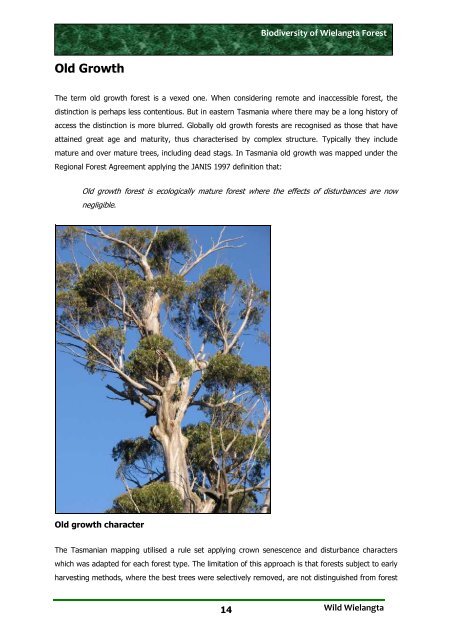Biodiversity of Wielangta Forest - Wild Wielangta - Edublogs
Biodiversity of Wielangta Forest - Wild Wielangta - Edublogs
Biodiversity of Wielangta Forest - Wild Wielangta - Edublogs
You also want an ePaper? Increase the reach of your titles
YUMPU automatically turns print PDFs into web optimized ePapers that Google loves.
Old Growth<br />
14<br />
<strong>Biodiversity</strong> <strong>of</strong> <strong>Wielangta</strong> <strong>Forest</strong><br />
The term old growth forest is a vexed one. When considering remote and inaccessible forest, the<br />
distinction is perhaps less contentious. But in eastern Tasmania where there may be a long history <strong>of</strong><br />
access the distinction is more blurred. Globally old growth forests are recognised as those that have<br />
attained great age and maturity, thus characterised by complex structure. Typically they include<br />
mature and over mature trees, including dead stags. In Tasmania old growth was mapped under the<br />
Regional <strong>Forest</strong> Agreement applying the JANIS 1997 definition that:<br />
Old growth forest is ecologically mature forest where the effects <strong>of</strong> disturbances are now<br />
negligible.<br />
Old growth character<br />
The Tasmanian mapping utilised a rule set applying crown senescence and disturbance characters<br />
which was adapted for each forest type. The limitation <strong>of</strong> this approach is that forests subject to early<br />
harvesting methods, where the best trees were selectively removed, are not distinguished from forest<br />
<strong>Wild</strong> <strong>Wielangta</strong>


